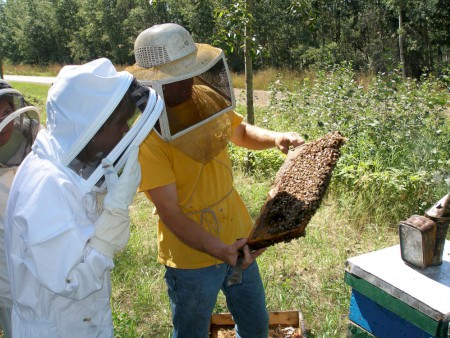Quality Canadian Honey
 The "Bear" Facts About Canadian Honey
The "Bear" Facts About Canadian Honey
- Canadian honey is recognized around the world for its high quality and the beekeepers who supply Bee Maid are proud to play a starring role.
- The sunny and long summers in western Canada provide the clover, alfalfa and canola crops for bees to forage and produce the mild, white Canadian honey prized for its taste.
- Manitoba, Saskatchewan and Alberta produce 80% of Canada’s honey crop.
- Canada is the world’s sixth largest producer of honey.
- Honey is produced from July to August.
- The average honey yield per hive in Canada is twice the world’s average due to our long and warm summer days and a vast supply of nectar producing crops.
- Canadian honey is enjoyed in more than 25 countries—main destinations are the US and Japan.
- Bees play a vital role in the pollination of many crops including fruits and vegetables.
- It has been estimated that honeybee pollination contributes up to $1 billion annually in terms of increased Canadian agricultural production; this is in addition to the over $225 million in direct receipts from the production of honey itself.
- The Canadian honey industry offers much more than just honey. Other honey by-products include:
- beeswax for candles and household products such as polishes
- protein-rich pollen, which is used as a diet supplement
- propolis, which is becoming widely known and accepted as an ingredient in cosmetics and lip balms, as well as a tonic
- royal jelly, a special feed produced by worker bees for the queen bee, which is used in skin creams and lotions.
- The safety and quality of Canadian honey is second to none. The Canadian Food Inspection Agency, through the Honey Regulations of the Canada Agricultural Products Act, ensures that Canadian honey producers meet strict federal standards.
 The "Bear" Facts About Canadian Honey
The "Bear" Facts About Canadian Honey